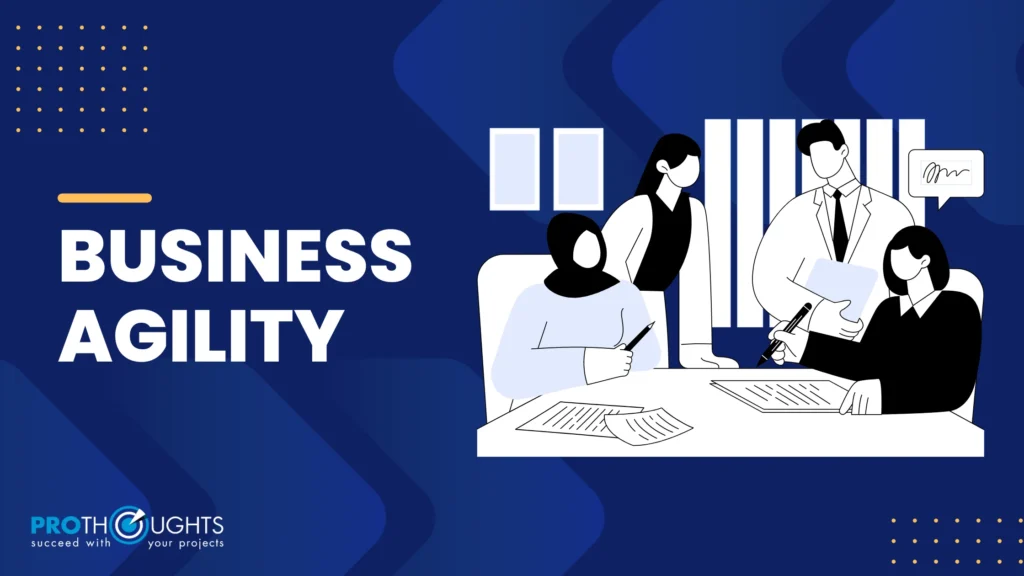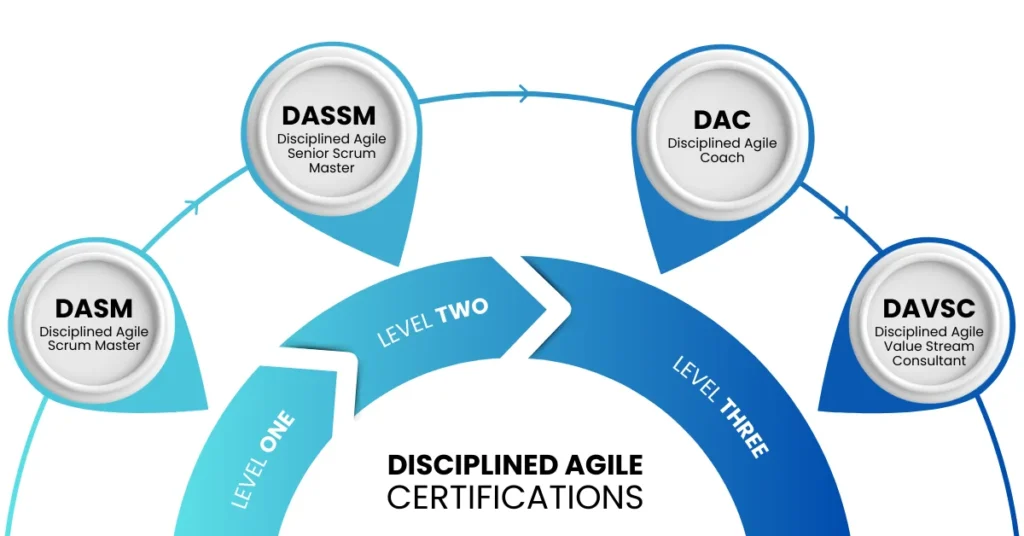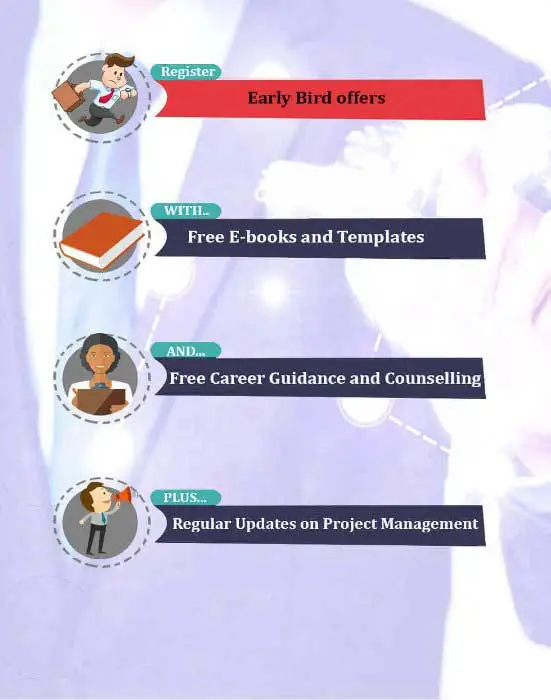
Most successful leaders and businesses have excellent forecasting skills. Where are the times leading? What are the possible outcomes of our projects? What could be the setbacks and risks? – A business leader must be on top of it all the time. But, market trends are getting harder to predict. Businesses are plagued by VUCA, i.e., volatility, uncertainty, complexity, and ambiguity. This paradigm shift is urging businesses to switch strategies and their way of working. But good news! You can tackle this VUCA with: Vision, Understanding, Clarity, and Agility! Well, more specifically – Business Agility.
In this guide, we will discuss what business agility is and how you can implement it in your organization. We will also discuss how the latest changes in the Disciplined Agile spectrum work in your favor!
What Does Agile Mean In Business?
Agile as a concept is more popular in software development. But, lately, it has been seeping into all aspects of a business – be it Sales, Operations, or Marketing. Newer organizations are now “Born Agile”, whereas business giants work on achieving agility by letting go of their old machine-like practices. And well, the rest just have Agility imposed upon them as a means to keep up with the competition. No matter the reason or place of starting, the end goal remains the same for all – Achieving Business Agility.
As businesses continue to seek a higher level of agility – enterprise or business agility, there comes a need to understand how to go about it. It requires them to improve their way of working to be stable yet adaptable at the same time. Apart from value delivery and business operations, Agility also transforms the way the leadership is structured as well as ameliorates company culture. It gets rid of bureaucracy and the culture of working in silos to foster leadership that provides defined goals and not laid-out instructions. Thus, within a business Agility means end-to-end accountability within teams, flat business structures, and a culture that cultivates passionate professionals who work together to find solutions.
What Is Business Agility?
The demand for good deliverables at a swift and consistent rate is taking up an exponential curve. It’s not just consumers who are looking for this speed in production – it’s the business leaders too. Moreover, stakeholders, partners, and regulators are also putting across pressing demands. As a cherry on top – there are investors seeking growth charts as well. Thus, there is a rising need to optimize processes, while also improving your products and services. Moreover, your business must also keep up with the latest trends, practices, and technological advancements. In this frenzy, when businesses are struggling to survive, Business Agility becomes a necessity to thrive.
Business agility is the process of incorporating the Agile mindset into your entire enterprise. That is, it demands the teams to respond to market changes swiftly. Be it a risk that threatens your project or an opportunity that could make the business grow – an Agile organization must be able to deal with either using innovative and effective solutions. McKinsey’s Quarterly survey report of 2,500 business leaders stated that High Tech, Telecom, Financial Services, and Media and Entertainment were the sectors demonstrating the highest number of Agile Transformations.
Business Agility meets the market need to consistently and continuously match your pace with the customer expectations, demands, and feedback. It also ensures a better-engaged workforce, faster time to market, higher revenue growth, lower costs, and long-term performance. Thus, business agility comes with a wealth of benefits for the organization!
Want to get started? Let’s show you how!
How To Lay Business Agility Foundations
Business Agility isn’t merely about responding to market changes; it’s a fundamental shift in organizational mindset, culture, and operations. And, to put it in a straightforward way, it is difficult to achieve organizational agility all at once. Most organizations start from their software teams and then branch out to the people-facing or value-delivery teams. This spreads to nearly a quarter of the teams of the organization. Then over the years, the organization can completely have all their operational units functioning on the Agile Framework.
Companies that are aiming toward Business Agility can follow the steps below as progress markers for their path:
1. Define A North Star And Follow It Through and Through:
The first step to achieving Business Agility is to define a vision and purpose for the team. This North Star must take into account consumer expectations and promise value for all stakeholders. Moreover, the North Star of an Agile Organization shows the right path to creating value for the customers. So, to achieve true business agility, businesses must put stakeholder interests at the crux of their vision and purpose, to have it at the core of their way of working. Some examples of Agile organizations that have a guiding North Star are Amazon, Patagonia, and Virgin.
2. Create Empowered Teams:
Business Agility demands small, nimble teams and flat organizational structures. The companies must maintain a stable top-level structure but replace the remaining hierarchy with teams having clearly defined roles. These teams are fit for purpose and have greater autonomy and accountability. They function through hands-on governance and have decision-making powers close to the relevant teams themselves. Moreover, they can be assembled and dissolved rapidly too. Business Agility demands you to nurture a conducive ecosystem that empowers people and balances their individual freedom with effective collaboration. This ensures alignment with the “North Star” and builds transparency and effective communication between teams.
3. Boost Decision-Learning Cycles:
Business Agility urges you to develop faster decision-learning cycles and to “fail fast” so that you learn fast. You must have a continual iteration of thinking, doing, and learning. This experimentation and solution-finding approach eventually has the business functioning in the most suitable way of working. Also, Business Agility prefers 70 percent probability now rather than 100 percent certainty later. This is because smaller decisions are made continually along the way – rather than a few big bets longer time frames away. Top names like Google, Haier, Tesla, and Whole Foods constantly evaluate the environment. They track the progress of initiatives and decide whether to go forward with them, boost their pace, or just shut them down.
4. Adopt The Dynamic People Model:
To achieve business agility, the working culture of the company must be people-centric instead of process-focused. Such a culture demands good leadership that empowers and develops its people. At the same time, the community mindset of the teams must support and grow this culture further. When each person is empowered and holds accountability to their own contributions to the teams, and in extension the organization, the business becomes truly agile. There must be shared and servant leadership. Here the leaders are visionaries who coach the people and the teams, in turn, deliver exceptional results. The leadership also pushes the right people to contribute to strategic and organizational decisions.
5. Rethink How You Integrate Technology
Business Agility is a complete transformation of company ideals and culture for most businesses. To cope with this change, the infrastructure must be strong and flexible enough too. If there is a complete shift in the way you prioritize things, then the way your traditional or legacy systems are constructed might not work out for you. There could be interdependencies that might slow down production cycles. To tackle this, organizations can start by adopting cutting-edge work-management tools. This rethinking of technology and the way you integrate it will boost speed and flexibility and help you become more Agile as an enterprise.
Yes, with all these factors in play, business agility seems difficult to achieve and the process seems even tougher to implement. But, it is a gradual process. You just need to start where you are, let Agility percolate to your performance teams, and with unwavering Agile Coaching and Guidance you’ll get there!
How Can You Achieve Business Agility With Disciplined Agile?
Organizations that function on traditional practices have been trying to adapt to the new struggles of the market too. But, it has not worked out well for many. Only a few companies have thrived over time. Factually speaking, less than 10% of the non-financial S&P 500 companies in 1983 remained in the S&P 500 in 2013. Moreover, McKinsey surveyed 1,900 executives about their current business strategies and organizational structures. Turns out, 82% of these companies underwent redesign efforts. But only 23% were successful. The main factor here is the lack of clarity with regard to Agile Adoption and the absence of an Agile Coach or consultant to consistently guide the efforts.
Here the structured roadmap of Disciplined Agile comes to the rescue. It has courses distributed into 3 Levels. As you proceed further you gain deeper knowledge as well as a higher-level overview of business Agility. It draws inspiration from the Japanese principle of Shuhari which showcases the advancement from a beginner to a master in martial arts. For Disciplined Agile, there are 4 courses segmented into these 3 sequential levels. The master certifications of PMI Disciplined Agile actually gear you up to work with the company leadership to foster Agility in the “right way”. Moreover, you are equipped and trusted to provide concrete guidance to the ones at Levels 1 and 2, who lead projects and teams. Thus, with Disciplined Agile, enterprises can achieve true business Agility by implementing Agile principles in each sector systematically.
Let’s look at this Disciplined Agile Roadmap now.
Roadmap Laid Out By PMI For Disciplined Agile
Disciplined Agile Scrum Master (DASM) Certification
The Disciplined Agile Scrum Master (DASM) certification tackles the fundamentals of the Disciplined Agile methodology. It focuses on the core concepts based on the Disciplined Agile toolkit. The DASM curriculum covers several proven practices such as Scrum, Lean, Kanban, and SAFe. It even includes guidance on predictive approaches. This makes it ideal for legacy businesses functioning on traditional predictive methodologies. The DASM course gives you concrete knowledge that you can directly apply as a team leader in your business.
Disciplined Agile Senior Scrum Master (DASSM) Certification
PMI introduced another step in the disciplined agile journey with the DASSM certification. The idea was to provide clearly mapped-out distinctions between a scrum master and a senior scrum master. The basis of the division is their skills and ability to solve more complex problems. Disciplined Agile Senior Scrum Master Certification (DASSM) equips you to lead a single Agile team and/or multiple Agile teams and acts as a helping hand in taking up more complex initiatives for your organization.
Disciplined Agile Coach (DAC) Certification
There are primarily three agile roles, as known to most practitioners: The developers, product owners, and scrum masters. Then where do the agile coaches fit in? The Disciplined Agile Coach (DAC) certification produces expert authorities who consult on Disciplined Agile and manage complex inter-linked projects simultaneously. Moreover, this prestigious course inculcates the key skill to navigate through different priorities and preferred agile ways of working (WoWs) of the teams. So, by getting DAC-certified you gain the necessary ammunition to help your organization achieve true agility!
Also Read:
Disciplined Agile Value Stream Consultant (DAVSC) Certification
Applying Agility to the entire organization demands a seasoned professional to guide their initiatives. DAVSC-certified practitioners help businesses achieve this “True Agility”. The Disciplined Agile Value Stream Consultant (DAVSC) certification teaches candidates how to use value stream management to design a customized strategy. It is aimed at boosting value delivery and optimizing enterprise-wide value streams. The DAVSC certification is an advanced level certification and is equivalent to the Disciplined Agile Coach certification.
Conclusion
Business Agility isn’t just a buzzword; it’s a strategic imperative for organizations aiming to thrive. Market trends are becoming increasingly difficult to predict so adaptability and responsiveness are necessary to stay competitive.
Implementing Business Agility isn’t an overnight process; it requires a structured approach and a willingness to adapt. Here, Disciplined Agile can provide a structured roadmap for organizations to begin their journey. With certifications like Disciplined Agile Scrum Master (DASM), Disciplined Agile Senior Scrum Master (DASSM), Disciplined Agile Coach (DAC), and Disciplined Agile Value Stream Consultant (DAVSC), organizations can systematically implement Agile principles across various levels and functions.
True business agility is a step towards higher revenue growth, lower costs, and long-term performance. So, are you going Agile yet?




